Abstract
Antigenic extracts of Streptococcus group E (SGE) were subjected to fractional ethanol precipitation, block (preparative) electrophoresis, and gel filtration for the purpose of separating the type antigen from the group antigen. Ethanol precipitation was ineffective in separating the substances. Block electrophoresis yielded serologically pure group antigen and a mixture of type and group antigen. Serologically pure type antigen was obtained by gel filtration. In some cases, pure group antigen was also recovered; in others, it was contaminated with type antigen. Gel filtration column effluents of antigenic extracts of SGE serotypes, I, II, III, IV, V and “untypable” isolates, collected from the region in which type antigen was eluted, were studied by paper chromatography and infrared spectrophotometry in an effort to develop a nonserological means of detecting type antigen. Hydrolysates of type antigens or suspect type antigens of serotypes I through V contained l-rhamnose, d-glucose, and several unidentified substances. d-Galactose also was present in hydrolysates of serotypes III and V. Untypable isolates and negative controls contained traces of d-glucose only. The data suggested that serotypes I through V contained a type antigen and that the untypable isolates were devoid of type antigen. Infrared absorbance spectra seemed to support the paper chromatography data.
Full text
PDF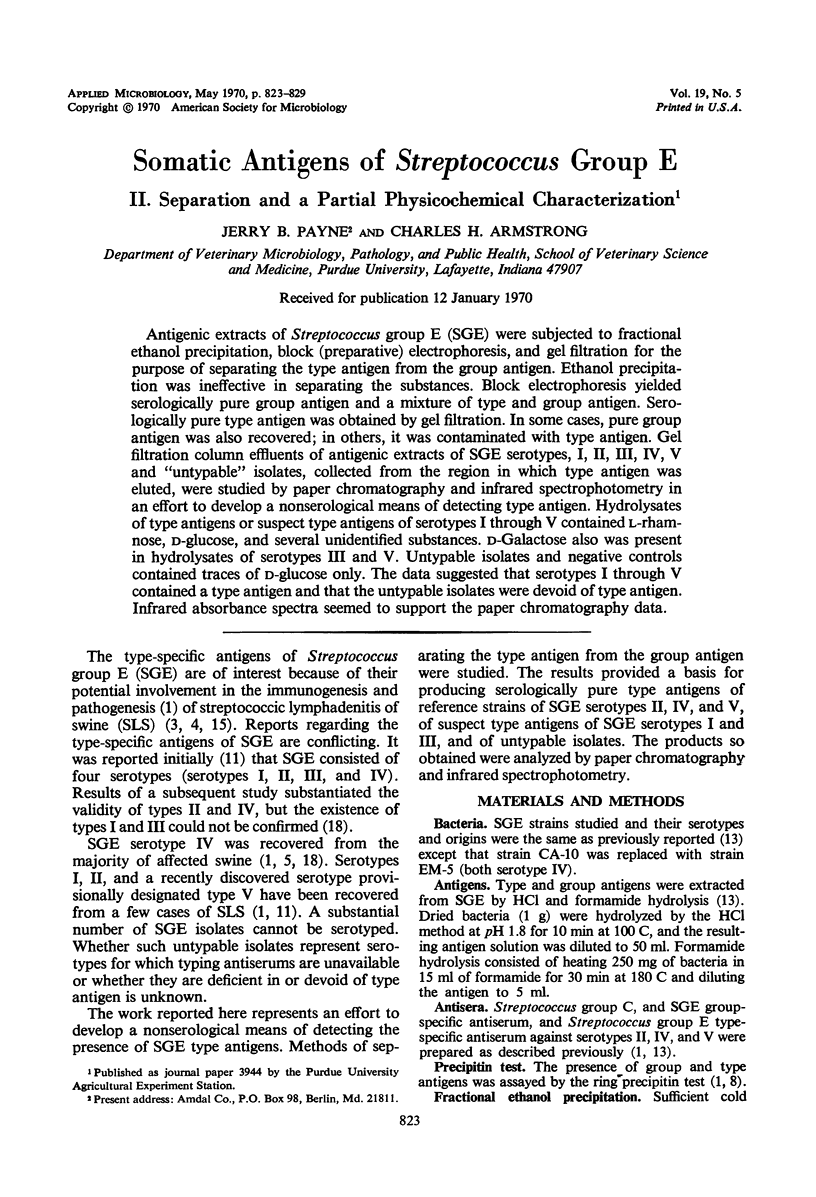
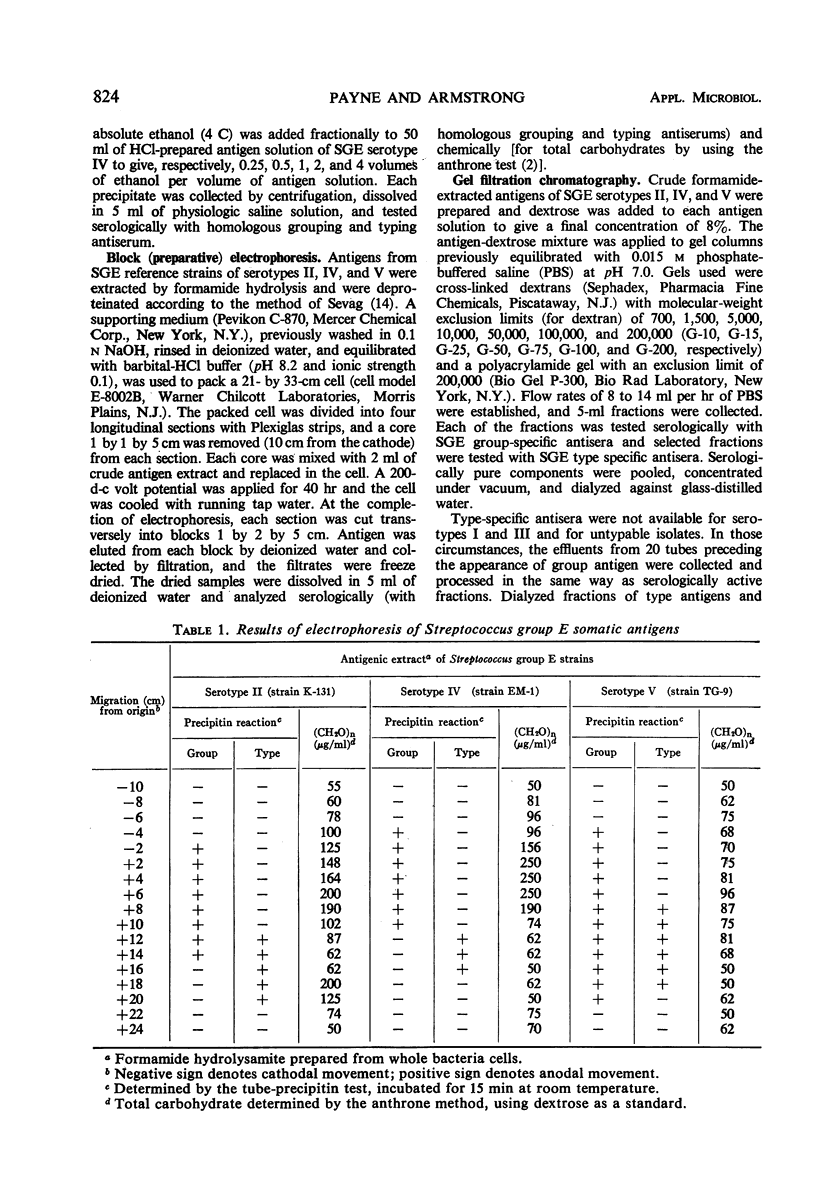
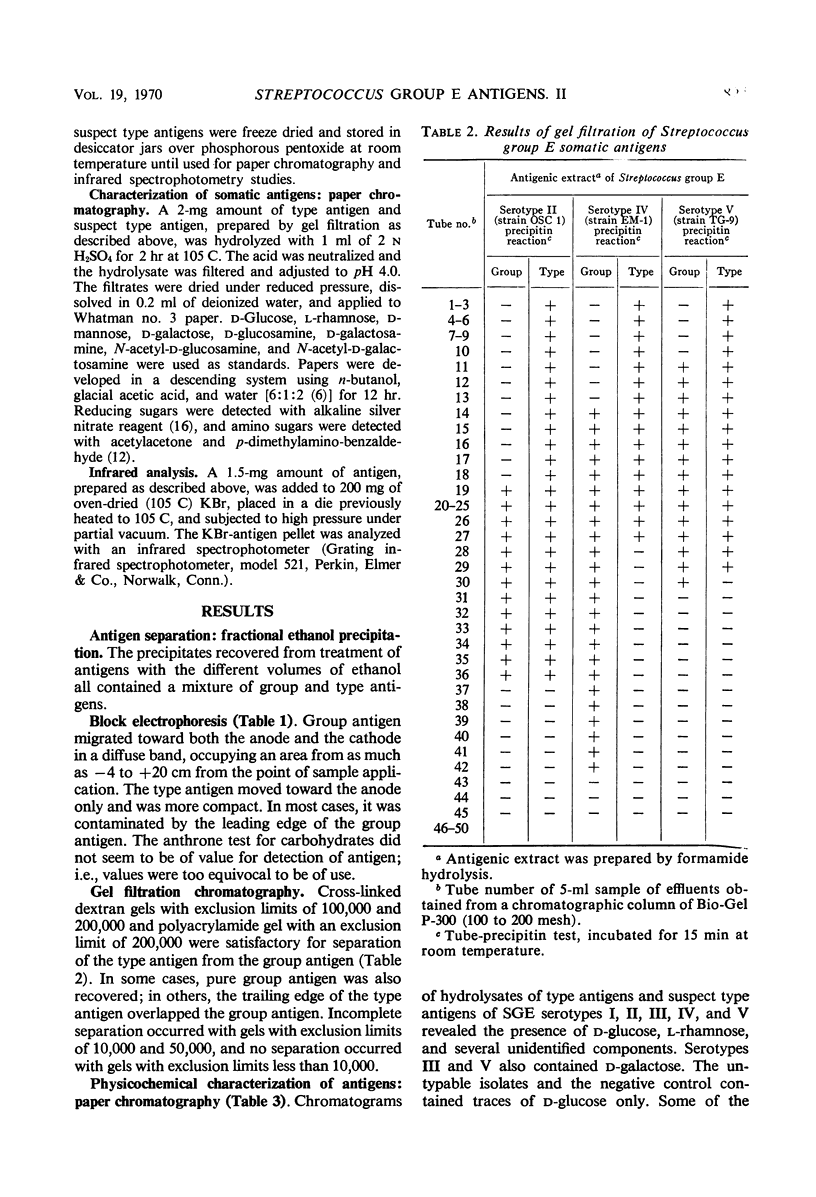
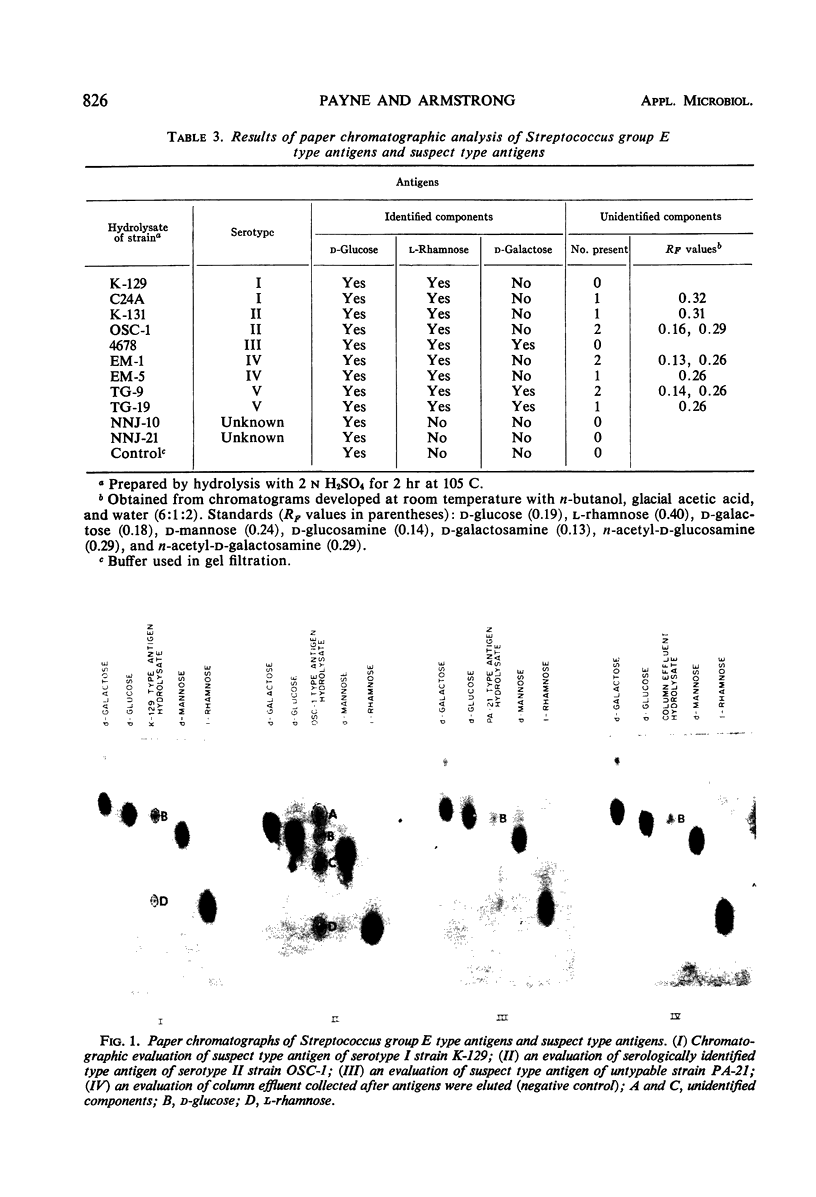
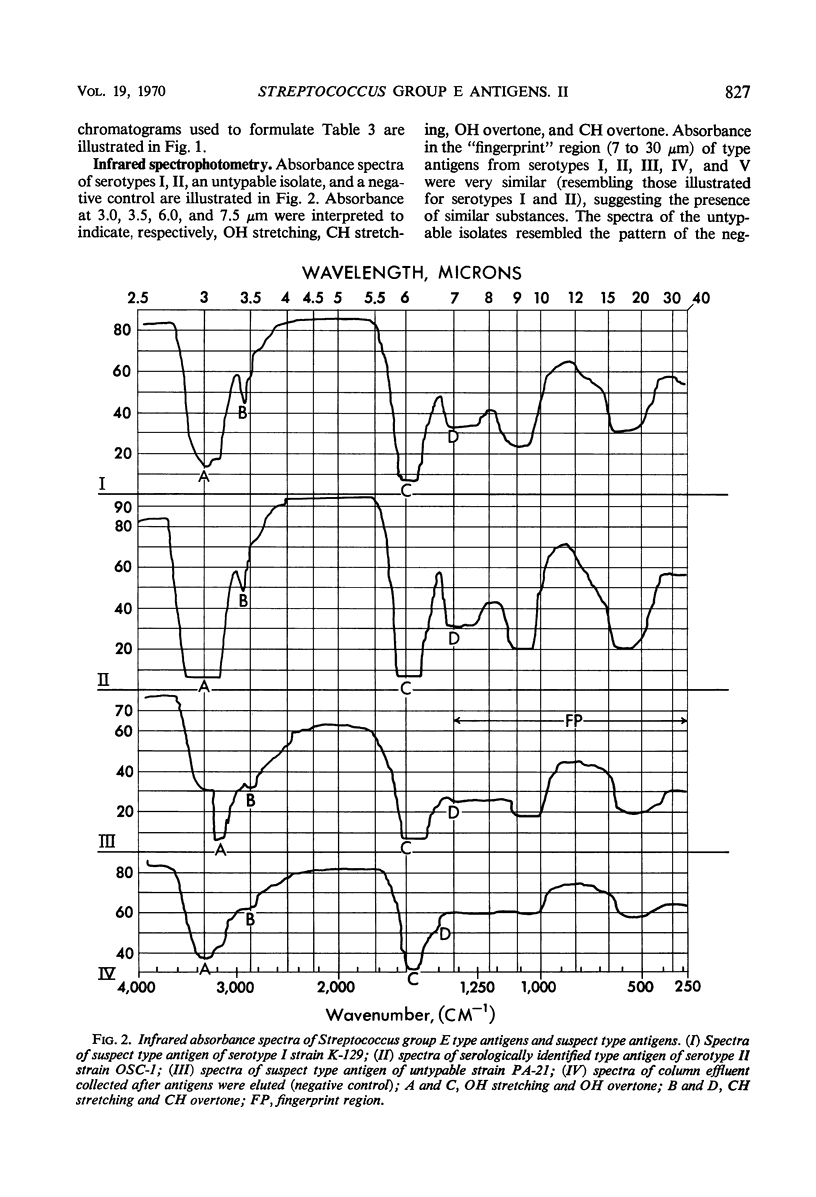
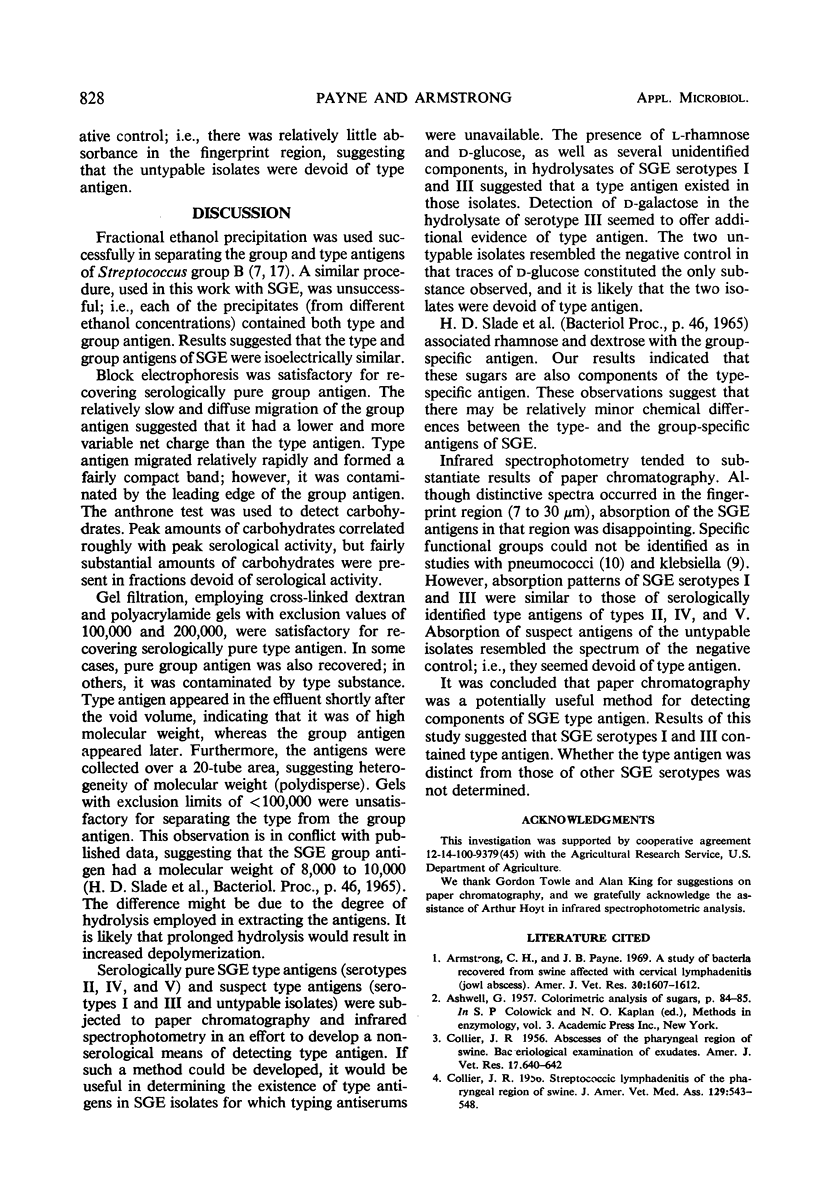
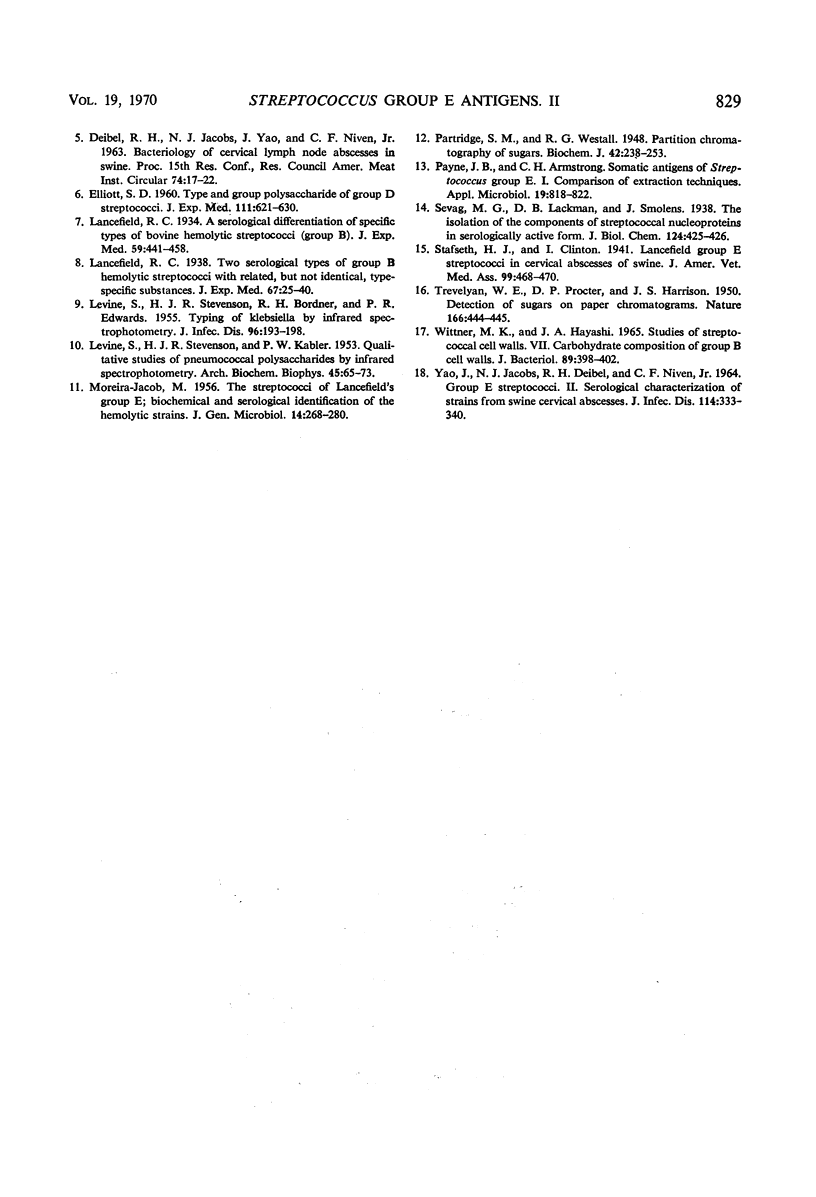
Images in this article
Selected References
These references are in PubMed. This may not be the complete list of references from this article.
- Armstrong C. H., Payne J. B. Bacteria recovered from swine affected with cervical lymphadenitis (jowl abscess). Am J Vet Res. 1969 Sep;30(9):1607–1612. [PubMed] [Google Scholar]
- COLLIER J. R. Streptococcic lymphadenitis of the pharyngeal region of swine. J Am Vet Med Assoc. 1956 Dec 15;129(12):543–548. [PubMed] [Google Scholar]
- ELLIOTT S. D. Type and group polysaccharides of group D streptococci. J Exp Med. 1960 May 1;111:621–630. doi: 10.1084/jem.111.5.621. [DOI] [PMC free article] [PubMed] [Google Scholar]
- LEVINE S., STEVENSON H. J., BORDNER R. H., EDWARDS P. R. Typing of Klebsiella by infrared spectrophotometry. J Infect Dis. 1955 Mar-Apr;96(2):193–198. doi: 10.1093/infdis/96.2.193. [DOI] [PubMed] [Google Scholar]
- LEVINE S., STEVENSON H. J., KABLER P. W. Qualitative studies of pneumococcal polysaccharides by infrared spectrophotometry. Arch Biochem Biophys. 1953 Jul;45(1):65–73. doi: 10.1016/0003-9861(53)90405-6. [DOI] [PubMed] [Google Scholar]
- MOREIRA-JACOB M. The streptococci of Lancefield's group E; biochemical and serological identification of the haemolytic strains. J Gen Microbiol. 1956 Apr;14(2):268–280. doi: 10.1099/00221287-14-2-268. [DOI] [PubMed] [Google Scholar]
- Partridge S. M. Filter-paper partition chromatography of sugars: 1. General description and application to the qualitative analysis of sugars in apple juice, egg white and foetal blood of sheep. with a note by R. G. Westall. Biochem J. 1948;42(2):238–250. doi: 10.1042/bj0420238. [DOI] [PMC free article] [PubMed] [Google Scholar]
- TREVELYAN W. E., PROCTER D. P., HARRISON J. S. Detection of sugars on paper chromatograms. Nature. 1950 Sep 9;166(4219):444–445. doi: 10.1038/166444b0. [DOI] [PubMed] [Google Scholar]
- WITTNER M. K., HAYASHI J. A. STUDIES OF STREPTOCOCCAL CELL WALLS. VII. CARBOHYDRATE COMPOSITION OF GROUP B CELL WALLS. J Bacteriol. 1965 Feb;89:398–402. doi: 10.1128/jb.89.2.398-402.1965. [DOI] [PMC free article] [PubMed] [Google Scholar]
- YAO J., JACOBS N. J., DEIBEL R. H., NIVEN C. F., Jr GROUP E STREPTOCOCCI. II. SEROLOGICAL CHARACTERIZATION OF STRAINS FROM SWINE CERVICAL ABSCESSES. J Infect Dis. 1964 Oct;114:333–340. doi: 10.1093/infdis/114.4.333. [DOI] [PubMed] [Google Scholar]



